The bacterium Treponema pallidum causes the sexually transmitted disease (STD) syphilis. Many call this disease “the great imitator.” This is because many syphilis symptoms look extremely similar to symptoms of other diseases.
The Centers for Disease Control and Prevention (CDC) reports that 101,567 new diagnoses were reported in 2017.
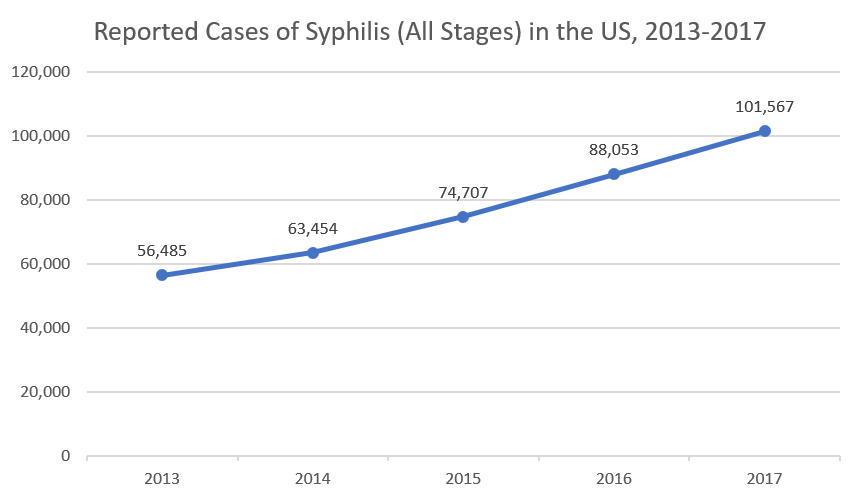
How Do You Get Syphilis?
Transmission happens when someone comes into contact with sores. However, many people do not recognize these sores. In fact, many people do not show symptoms for years. This means that people can transmit the infection without even knowing it. But even without showing symptoms, untreated people are still at risk for serious long-term complications.
Sexual contact can spread this STD. Don’t make the mistake of thinking only vaginal sex can spread this disease! Oral and anal sex are other means of transmission. A pregnant mother can also pass this infection to her child. This type of transmission is known as congenital syphilis.
Does Having Syphilis Put Me at Greater Risk for HIV?
Yes. Syphilis chancres make it easier to sexually transmit HIV.
Why does syphilis make me more likely to get HIV?
Skin and membranes are natural barriers. This means that they help protect the body against infection. Ulcerative (ulcer-causing) STDs like syphilis cause breaks in these barriers. In other words, these STDs break natural protective barriers.
How does syphilis make me more likely to get HIV?
Chancres can bleed easily. When sores come into contact with certain bodily fluids, it increases the infectiousness of HIV.
How else does syphilis put me at greater risk for HIV?
Having other STDs is an important predictor for getting HIV. STDs are linked to behaviors associated with HIV transmission.
Can I Prevent Syphilis?
The best way to prevent all STDs is to avoid sexual contact. Being in a long-term, mutually monogamous relationship with an uninfected partner greatly reduces the risk of getting an STD.
It is best to avoid activities that can lead to risky sexual behavior. These activities can include alcohol and drug use. It is important that sexual partners talk to each other about their HIV status and history of other STDs. This way, people can take preventative action, if needed.
Syphilis can affect both men and women. Infection can happen in areas that are covered by a condom as well as in areas that are not covered. So, putting on a condom and using it correctly can reduce STD risk. However, if the condom does not properly cover a sore, transmission can still happen.
Activities that DO NOT help prevent syphilis include:
- Using condoms lubricated with spermicides. Some people believe that condoms lubricated with spermicides can protect against STDs. This is a myth! These condoms are no more likely to prevent STDs than other lubricated condoms.
- Using hormonal birth control. Correctly used birth control only helps prevent pregnancy. It will not help prevent STDs or HIV.
- Washing the genitals, urinating, and/or douching after sex. These activities do not prevent STDs. In fact, vaginal douching can do more harm than good. According to the Office on Women’s Health (OWH), vaginal douching is linked to STDs, among other health problems. This is why most doctors do not endorse the practice.
Activities that can reduce the risk of catching and transmitting syphilis include:
- Avoiding any and all sexual contact. This is the only way to 100% avoid STDs.
- Being in a long-term, monogamous relationship with a healthy partner.
- Always using condoms.
- Correctly using condoms/making sure condoms cover the infected area.
- Not abusing drugs or alcohol.
- Openly talking with all partners about sexual health and history.
- Regularly getting tested.
Go here for more information on how to have safer sex.
Is Syphilis Curable?
Yes. It is easy to cure syphilis in its earlier stages. You must receive treatment from alicensed medical professional. There are no DIY remedies that can cure this STD. Do not believe a website or other source that tries to sell you a homemade cure for this STD.

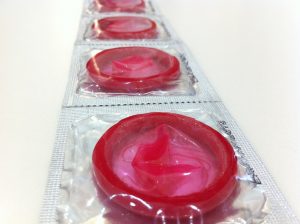
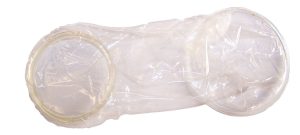
What Are Common Syphilis Symptoms?
Syphilis occurs in several stages, and symptoms will vary by individual. Signs can be faint, sores can be hidden, symptoms can look like other diseases, and latent stages can mean symptoms don’t show at all! As you can see, it can be hard to know if what you have is syphilis based on outward signs alone. Lab tests are the only way to 100% confirm if you have this infection, especially in earlier stages. Without proper treatment, this disease only gets worse over time.
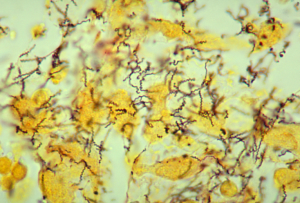
What Are the Syphilis Stages?
Primary Stage
When does this stage occur?
This is the stage when the first symptoms may appear. The CDC says symptoms can show up anywhere between 10 to 90 days. The average is usually 3 weeks.
What happens during this stage?
In this stage, a sore(s), or chancre(s), may appear. What do chancres look like? They are typically small and round. Notably, they are often painless. There is no universal place that chancres appear. This is because sores appear wherever syphilis entered the body. This will vary by person.
When does this stage end?
This stage ends when chancres heal. It can take 3 to 6 weeks for them to heal, and they heal without treatment. However, don’t think you’re cured just because sores disappeared. Syphilis stays in the body, even if there are no present symptoms. Not receiving professional treatment can lead to further stages. Further stages can cause serious health complications.
Secondary Stage
When does this stage occur?
This happens when someone does not receive treatment for syphilis early on. The secondary stage brings rashes and lesions. Rashes can appear as chancres heal or several weeks after chancres heal.
What happens during this stage?
In this stage, people can experience rashes and lesions. They can occur in several places, and not just the area(s) where syphilis entered the body. It is not unusual for people to develop rashes on the bottom of the feet or palms, for example.
What are these rashes like? People report that they are not usually itchy, and look like reddish or reddish-brownish spots (see image below). Other signs, like fatigue and weight loss, can occur. Again, these symptoms are not unique to syphilis; this is why you cannot diagnose the disease by symptoms alone.
When does this stage end?
Symptoms can resolve on their own. But without treatment, the infection can get worse over time. Remember: just because you don’t show symptoms doesn’t mean you are cured.
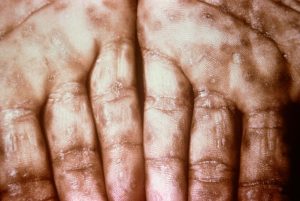
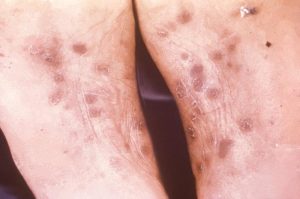
Latent Stage
When does this stage occur?
The latent, or hidden, stage of syphilis begins when primary and secondary symptoms disappear. It can occur both within the first year of infection (early latent) or later than that (late latent).
What happens during this stage?
Without treatment, an infected person will continue to have syphilis. That’s right: even though there are no signs or symptoms, the infection remains in the body.
When does this stage end?
This latent stage can last for years, even decades.
Tertiary Stage
When does this stage occur?
This stage can occur decades after the initial infection.
What happens during this stage?
This stage can cause major damage. Damaged areas can include internal organs like the brain as well as bones and joints. Symptoms can include paralysis, gradual blindness, and dementia. This damage may be serious enough to cause death.
How Do I Receive a Syphilis Diagnosis?
Proper lab tests can confirm whether you have this STD or not. Blood tests are the most common type of syphilis testing.
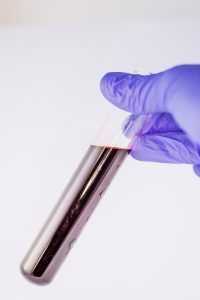
How do these tests work?
Shortly after infection, the body produces syphilis antibodies. An accurate, safe, and inexpensive blood test can detect these antibodies. A low level of antibodies can stay in the blood for months or years. It is sometimes possible to detect these levels even after successful treatment.
I’m pregnant, and I don’t know if I have syphilis. Should I get tested?
Yes! Pregnant women with syphilis can pass it along to their child. Remember, this is called congenital syphilis, and it is on the rise in the United States. Untreated syphilis in a pregnant woman can have permanent, even fatal, consequences for the baby. As such, every pregnant woman should receive syphilis testing.

How Do I Get Syphilis Treatment?
Syphilis is easy to cure in its early stages. Penicillin, an antibiotic, will cure a person who has had the infection for less than a year. Someone who has had it longer will need more than one dose.
What if I’m allergic to penicillin?
You have options! Other antibiotics are available to treat syphilis if you are allergic to penicillin.
I don’t want to see a doctor. Can’t I just pick up something from the drugstore?
No. There are no home remedies or over-the-counter drugs that will cure this disease. You must receive treatment and direction from a licensed health care professional.
What happens after I receive treatment?
- Abstain from sexual contact until the syphilis sores heal. Note that treatment will kill the syphilis bacteria and prevent further damage. It will not, however, repair damage already done.
- Notify previous sexual partners.
Because effective treatment is available, it is important to regularly get tested. This is especially true if your behavior puts you at a greater risk for STDs. Use our free STD Risk Calculator to see if your behaviors are associated with higher STD risk.
Can I Get Syphilis Again?
Yes! Having syphilis once does not protect you from getting it again. Repeat: even if you are successfully treated, you can catch this STD again. Only lab tests can confirm if you have syphilis. Remember: syphilis signs can be hard to spot. So, it may not be obvious that you or a sexual partner has this infection. Talking with a health care provider will help you determine if you need re-testing.
Where Can I Get Tested for Syphilis?
Any unusual discharge, sore, or rash–particularly in the groin area–should be a signal to stop having sex and get tested immediately.
Find your local syphilis testing facility.
You can order a syphilis test here. Simply select the infections you wish to test for, follow the check-out instructions, and collect your Lab Requisition Form and testing code. Be sure to bring either the Form or code with you to your preferred testing center.
Centers for Disease Control and Prevention (CDC). Syphilis Fact Sheet. U.S. Department of Health and Human Services. Retrieved from https://www.cdc.gov/std/syphilis/stdfact-syphilis.htm
Christopher S. Hall and Gail Bolan. Syphilis and HIV. HIV InSite Knowledge Base Chapter. UCSF Center for HIV Information. 2006. Retrieved from http://hivinsite.ucsf.edu/InSite?page=kb-05-01-04
Office on Women’s Health. Douching. U.S. Department of Health and Human Services. Retrieved from https://www.womenshealth.gov/a-z-topics/douching
Special Programme for Research and Training in Tropical Diseases (TDR). Disease Watch Focus: Syphilis. World Health Organization (WHO). Retrieved from https://www.who.int/tdr/publications/disease_watch/syphilis/en/
The images shown on this page are for illustrative purposes only; do not attempt to self-diagnose based on these images.
“Syphilis Testing – Where Can I Get Tested?,” this site, and its resources should not act as a substitute for medical information or advice provided by a licensed health care professional.




